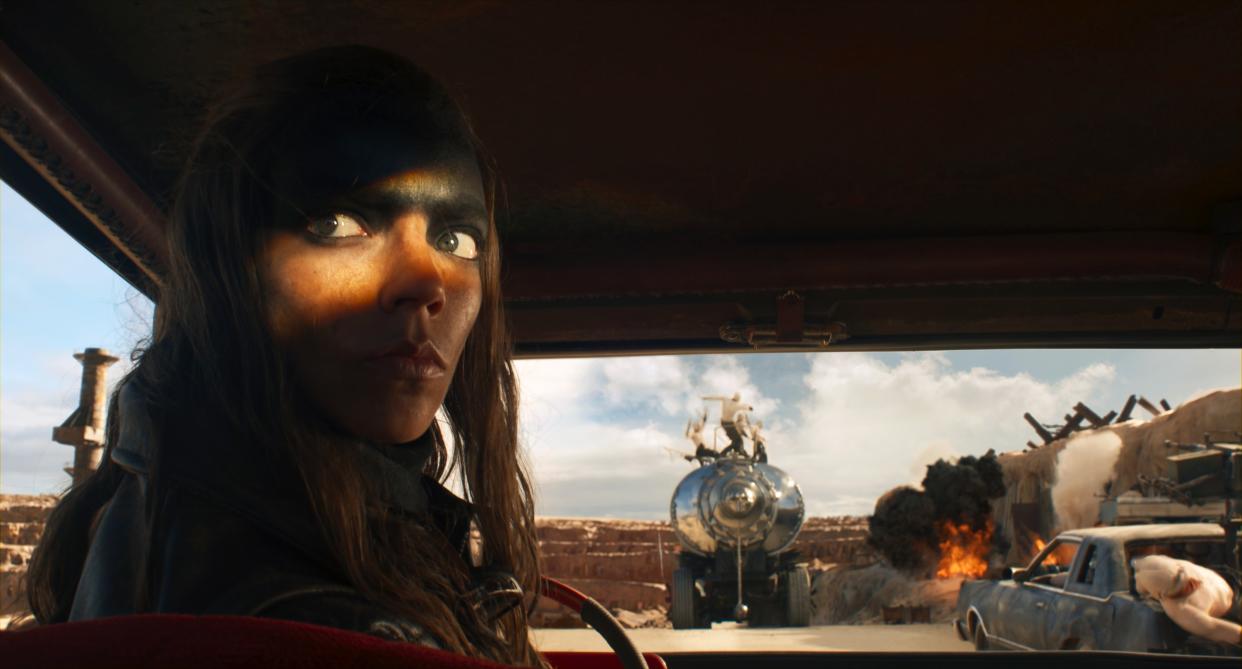George Miller on Directing the Most Ambitious Action Franchise of All Time

Over the course of 45 years and five films, director George Miller has created something unparalleled in the world of action cinema: an epic franchise that started great (with 1979’s “Mad Max”) and has grown exponentially more audacious, complex, and visionary with each subsequent film. Each time Miller returns to the “Mad Max” universe — from “The Road Warrior” (1981) and “Mad Max Beyond Thunderdome” (1985) to “Mad Max: Fury Road” (2015) — he expands upon and deepens the story with increasing ambition, a project that has now culminated in the most epic (in both length and mythological impact) entry in the series to date, “Furiosa.” The longevity of the series and the enduring fertility of Miller’s imagination have proven one of the movies’ great surprises over the years — especially to Miller himself.
In fact, when asked whether he ever envisioned the “Mad Max” saga lasting for decades, Miller had a quick answer. “Never!” he told IndieWire’s Filmmaker Toolkit podcast. “It’s best expressed in John Lennon’s notion that life is what happens when you’re making other plans.” When Miller and his producing partner Byron Kennedy convinced friends to put money into the first “Mad Max,” Miller feared they had all made a terrible mistake. “I thought, ‘Oh my God, they’re going to lose all their money, these people who believed in us foolishly.'” Even though the film was a financial success, it was such a painful experience that, at first, Miller didn’t think he would ever make another movie. When he started to see the reactions to the film around the world, however, he began to rethink his plans.
More from IndieWire
How MoviePass Went from 'MovieCrash' to Profitability: 'All the Kinks Have Been Worked Out'
'Crooklyn' Oral History: Behind the Dramas and Joys of Spike Lee's 1994 Family Affair
“I began to realize that inadvertently, we had hit on something archetypal,” Miller said, noting that each culture seemed to see Max in a way consistent with its own history. “In Japan, he was a samurai. In Scandinavia, he was a lone Viking. In France, they saw ‘Mad Max’ as a Western on wheels.” Although the mythological resonances of the first “Mad Max” were unintentional, for the sequels, Miller decided to dig deep into the theories of Joseph Campbell and consciously aspired to fulfill the basic human needs satisfied by mythology, needs that had previously been fed by the Western. “The American Western was a staple of cinema from the silent era almost up into the ’90s because they were basically all allegorical. They were about a more elemental, simpler world in which the rules of engagement were fairly easy to grasp.”
Miller notes that the same codes that existed in Westerns — and in medieval stories before that — exist in “Furiosa.” “They’re basically a reflection on who we are today and on the ways that those same behavior patterns are pretty constant in human beings across all time and space,” Miller said. “The same stories, the same patterns are very, very common. So you can find those analogies throughout history that you see in ‘Furiosa.'” For Miller, the key is connecting all of the action to character, one of the reasons his propulsive action sequences are as visceral as they are. When he mounts an epic non-stop chase scene, as he does in “Furiosa,” its dynamism emerges from the story it tells about the title character. “It’s very much about Furiosa and how she gets a crash course in becoming a warrior purely out of the necessity to achieve what she wants to achieve and survive.”
The other key to Miller’s great action sequences lies in their execution, which has evolved in terms of scale and technology but adheres largely to guiding principles the director established in the first “Mad Max”: shooting scenes with wide-angle lenses and a low, moving camera to place the audience right in the middle of the chase. And then there’s another component, which is finding actors who can fulfill both the physical and emotional requirements of Miller’s conception. Luckily, in Anya Taylor-Joy, he has found another performer — like Mel Gibson, Charlize Theron, and Tom Hardy before her — who has both the star power and the acting chops to serve his larger-than-life needs. “She had a pure, precise athleticism, but also an emotional athleticism,” Miller said, noting that one of the biggest changes in the recent “Mad Max” movies emerging from digital technology is the ability for actors to do more of their own stunts since they can be in wires and harnesses that are removed in post.
That said, Miller said he never sets out to make his actors larger than life, even though that is the upshot of how he shoots them. “You don’t set out to do that because it can’t be affectation,” Miller said. “It’s got to be something that grows organically. And as I keep saying, it grows out of story, and story grows out of characters and their intentions and wants and the way that draws them into conflict with others. Or other things that get in the way, and out of that, their behavior becomes apparent. If you’re telling your story according to those moments, you can express something in someone’s posture and stance and behavior and face and words and eyes, all of that…but you can’t do it if it’s not earned out of the story.”
Best of IndieWire
Every Palme d'Or Winner from the Cannes Film Festival, Ranked
The 13 Best Thrillers Streaming on Netflix in May, from 'Fair Play' to 'Emily the Criminal'
The Best Father and Son Films: 'The Tree of Life,' 'The Lion King,' and More
Sign up for Indiewire's Newsletter. For the latest news, follow us on Facebook, Twitter, and Instagram.

 Yahoo News
Yahoo News 
